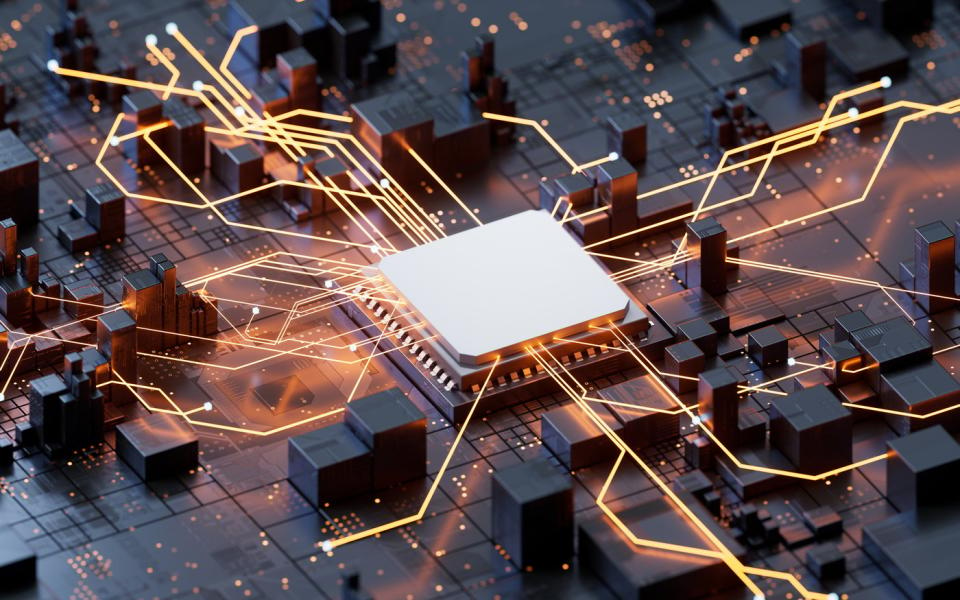Intel (NASDAQ: INTC), the world’s largest producer of x86 CPUs for PCs and servers, was once a bellwether of the semiconductor sector. But over the past 10 years, its stock has dropped more than 50% as it withered into a less valuable chipmaker than AMD, Nvidia, and Qualcomm.
Intel’s fall from grace was caused by manufacturing problems, product delays, market share losses, and jarring strategic shifts under three CEOs. It missed the shift toward mobile chips, focused too much on cutting costs, and kept buying back its own shares instead of resolving its persistent manufacturing issues or investing in new chips.

From 2013 to 2023, Intel’s revenue had an anemic compound annual growth rate (CAGR) of 0.3%. AMD, which outsourced its production to Intel’s foundry rival Taiwan Semiconductor Manufacturing (or TSMC), had a CAGR of 15.6% during the same period.
That’s why it wasn’t too surprising when a few recent reports said Intel was exploring some drastic options to rightsize its struggling business. Let’s see if any of those rumored ideas will make its stock worth buying again.
What are Intel’s main problems?
Intel is still an integrated device manufacturer, meaning it designs, manufactures, and markets its own chips. That sets it apart from fabless chipmakers like AMD and Nvidia, which outsource their production to third-party foundries.
Intel’s foundries once produced the world’s most advanced chips. But over the past decade, it slipped behind its two Asian competitors, TSMC and Samsung, in the “process race” to manufacture smaller, denser, and more power-efficient chips.
Intel’s troubles started with a difficult transition from 14 nanometer to 10nm chips (2018-2019) and worsened with even more delays in its subsequent transition to 7nm chips (2020-2023). Those grueling delays drove many PC makers to replace Intel’s CPUs with AMD’s.
According to PassMark Software, which measures PC performance, Intel’s x86 CPU market share dropped from 82.5% to 61.8% between the third quarters of 2016 and 2024, as AMD’s share expanded from 17.5% to 35.4%.
Unlike TSMC, which aggressively ramped up its research and development spending, Intel tightly controlled its capital expenditures and set aside too much cash for share buybacks and dividends. Bob Swan, CEO from 2019 to 2021, even briefly considered following AMD’s lead to become a fabless chipmaker to permanently resolve its production issues.
Pat Gelsinger, who succeeded Swan, doubled down on expanding its first-party foundries to catch up to TSMC and Samsung. That was a costly strategy: Gelsinger expected to offset those costs with government subsidies in the U.S. and Europe, but TSMC also secured some of those government subsidies for its overseas plants.
Does Intel need to shrink to grow again?
After Gelsinger took the helm, Intel offloaded numerous businesses, including its Optane memory chip, network switch chip, 4G/5G connectivity solutions, pre-built server, and cryptocurrency mining divisions. It also continued the multiphase sale of its NAND memory chip division to SK Hynix, spun off its automotive chip division Mobileye, and liquidated its remaining shares of the mobile chip designer Arm Holdings.
In early August, Intel suspended its dividend and said it would lay off 15% of its workforce to save up to $10 billion by 2025. Those shocking announcements accompanied a dismal second-quarter earnings report that broadly missed analysts’ expectations as the company struggled to ramp up its production of its newest Meteor Lake chips.
The latest reports suggest Intel might spin off or sell its struggling foundry unit. That move would mirror AMD’s spinoff of GlobalFoundries in 2009, but it would also completely undo Gelsinger’s original plans.
If that happens, Intel might go fabless and significantly reduce its spending by outsourcing all of its production to the newly spun off unit or other foundries like TSMC. But taking that drastic step would merely make it similar to AMD and subservient to TSMC.
Some other rumors suggest Intel might sell Altera, the programmable chipmaker it bought in 2015. But that divestment would erode its defenses against AMD, which acquired and integrated Altera’s top competitor Xilinx in 2022.
Did Intel just waste three years?
Intel hasn’t confirmed any of these rumors, but they imply it’s abandoning Gelsinger’s grand plans of reclaiming the process lead from TSMC by 2025. It also seems to be drifting back toward Swan’s idea of turning Intel into a fabless chipmaker.
Doing so might rightsize the business and stabilize its earnings growth again, but it also tells us the chipmaker wasted a lot of valuable time and billions of dollars over the past three years. That’s why I believe Intel’s focus on shrinking its business is actually a bright red flag that could generate tailwinds for TSMC and AMD.
Should you invest $1,000 in Intel right now?
Before you buy stock in Intel, consider this:
The Motley Fool Stock Advisor analyst team just identified what they believe are the 10 best stocks for investors to buy now… and Intel wasn’t one of them. The 10 stocks that made the cut could produce monster returns in the coming years.
Consider when Nvidia made this list on April 15, 2005… if you invested $1,000 at the time of our recommendation, you’d have $630,099!*
Stock Advisor provides investors with an easy-to-follow blueprint for success, including guidance on building a portfolio, regular updates from analysts, and two new stock picks each month. The Stock Advisor service has more than quadrupled the return of S&P 500 since 2002*.
*Stock Advisor returns as of September 3, 2024
Leo Sun has no position in any of the stocks mentioned. The Motley Fool has positions in and recommends Advanced Micro Devices, Nvidia, Qualcomm, and Taiwan Semiconductor Manufacturing. The Motley Fool recommends Intel and Mobileye Global and recommends the following options: short November 2024 $24 calls on Intel. The Motley Fool has a disclosure policy.
Intel Might Need to Shrink to Grow Again was originally published by The Motley Fool
